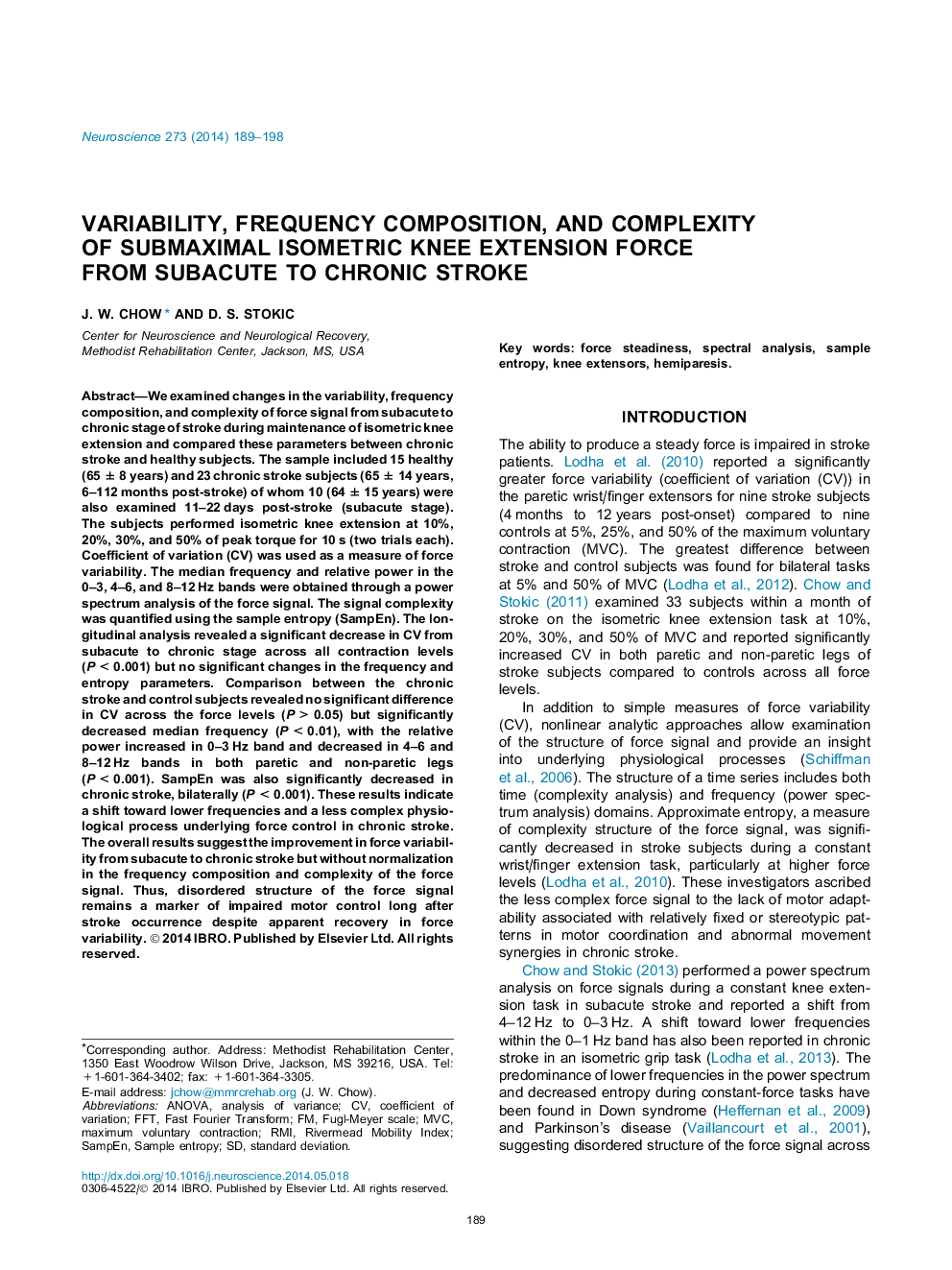| کد مقاله | کد نشریه | سال انتشار | مقاله انگلیسی | نسخه تمام متن |
|---|---|---|---|---|
| 6273416 | 1614803 | 2014 | 10 صفحه PDF | دانلود رایگان |
- Isometric knee extension force variability improves from subacute to chronic stroke.
- Frequency composition of force remains unchanged from subacute to chronic stroke.
- Complexity of force remains unchanged from subacute to chronic stage of stroke.
- Spectral power of force is shifted toward lower frequencies in chronic stroke.
- Force structure is less complex in chronic stroke.
We examined changes in the variability, frequency composition, and complexity of force signal from subacute to chronic stage of stroke during maintenance of isometric knee extension and compared these parameters between chronic stroke and healthy subjects. The sample included 15 healthy (65 ± 8 years) and 23 chronic stroke subjects (65 ± 14 years, 6-112 months post-stroke) of whom 10 (64 ± 15 years) were also examined 11-22 days post-stroke (subacute stage). The subjects performed isometric knee extension at 10%, 20%, 30%, and 50% of peak torque for 10 s (two trials each). Coefficient of variation (CV) was used as a measure of force variability. The median frequency and relative power in the 0-3, 4-6, and 8-12 Hz bands were obtained through a power spectrum analysis of the force signal. The signal complexity was quantified using the sample entropy (SampEn). The longitudinal analysis revealed a significant decrease in CV from subacute to chronic stage across all contraction levels (P < 0.001) but no significant changes in the frequency and entropy parameters. Comparison between the chronic stroke and control subjects revealed no significant difference in CV across the force levels (P > 0.05) but significantly decreased median frequency (P < 0.01), with the relative power increased in 0-3 Hz band and decreased in 4-6 and 8-12 Hz bands in both paretic and non-paretic legs (P < 0.001). SampEn was also significantly decreased in chronic stroke, bilaterally (P < 0.001). These results indicate a shift toward lower frequencies and a less complex physiological process underlying force control in chronic stroke. The overall results suggest the improvement in force variability from subacute to chronic stroke but without normalization in the frequency composition and complexity of the force signal. Thus, disordered structure of the force signal remains a marker of impaired motor control long after stroke occurrence despite apparent recovery in force variability.
Journal: Neuroscience - Volume 273, 25 July 2014, Pages 189-198
